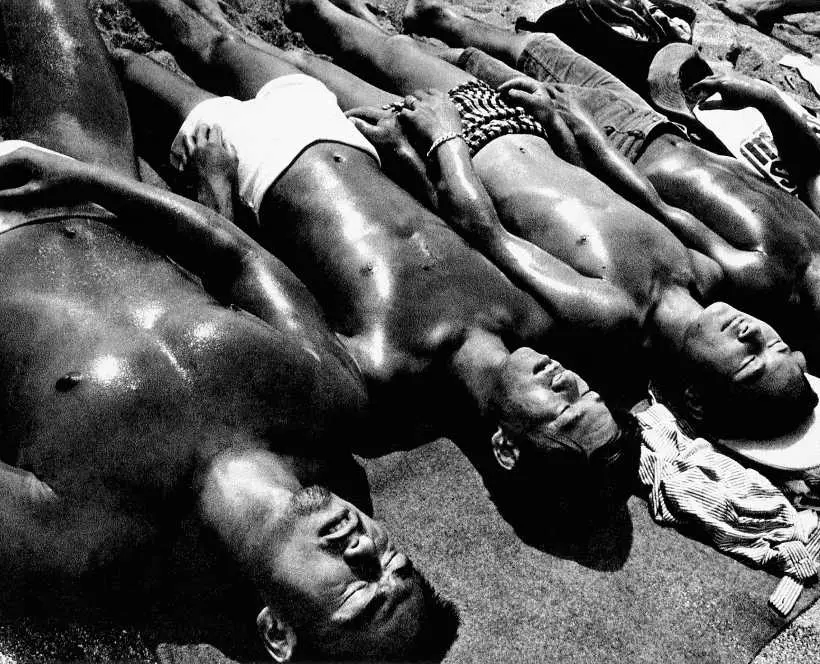Who is Daido Moriyama?
Born in 1938 in Osaka, Japan, Moriyama's photographic journey has been one of constant reinvention, testament to his unrelenting pursuit of the unexpected, chaotic, and the intensely personal.
Here we delve into seven things to know about Moriyama, the subject of the first retrospective of his work in the UK, now on at The Photographers' Gallery:
For me, photography is not a means by which to create beautiful art, but a unique way of encountering genuine reality.
Daido Moriyama
1. A lens on post-war Japan
Born in post-war Japan, Daido Moriyama embraced photography as a democratic language, promoted by the mass media industry. His work encapsulates the clash between Japanese tradition and Westernisation, following the US military occupation of Japan after the end of World War II. He saw his camera as a tool for capturing not just images but also the essence of an evolving society, making his photographs a mirror to an era of rapid transformation.
2. Influence of American artists
Moriyama was profoundly influenced by American artists like Andy Warhol and William Klein, as well as novelist and poet Jack Kerouac. Their bold and unconventional styles left a mark on his work. This influence can be seen in his daring approach to photography.
3. Provoke era
Provoke was a Japanese magazine which rejected the glossy commercial imagery and the style of documentary photography. Provoke was part of the photographic movement that arose out of the late 1960s and was motivated by the opposition artists had felt towards bourgeois society.
Moriyama played a pivotal role in the Provoke era, which saw a radical departure from conventional photography. He, along with other like-minded artists, aimed to free photography from its traditional confines. They believed in creating images that didn't rely on words for interpretation.
4. Unique aesthetic
Moriyama's work is known for its distinct style characterised in Japanese by ‘are, bure, boke,’ which translates as ‘grainy, blurry, out of focus’. This unique style challenged the conventional notion of photography and invites us to experience images in a new way.
To focus on reality or be concerned with memory, choices that, at first glance, seem opposite are, in fact, identical twins for me.
- Daido Moriyama
5. Raw, radical, real approach to photography
Moriyama is a trailblazer in the world of photography, effectively reinventing street photography. He challenged the status quo by rejecting traditional norms and embracing the accessible and reproducible nature of photography as its most radical asset – something he continues to do to this day.
6. Farewell Photography and Record
Photobooks play a critical role in Moriyama’s work - one of his most radical works is Farewell Photography (Shashin yo Sayonara) - a book that pushes the boundaries of photographic reality. Moriyama collected rejected images, discarded photos, and even odd negatives to create a chaotic yet thought-provoking sequence of grainy, cropped, solarized, and scratched images. This work is a rebellion against conventional photography but also Moriyama's own relationship to his work.
Magazines were also Moriyama’s fertile ground for photographic production and debates. His journey through photography can be seen in his ongoing publication, Record magazine. It's a diary of his life in cities, a place where he explores his obsessions, insecurities, and memories. Flip through its pages, and you'll experience an intimate glimpse into Moriyama's life.
7. What is Photography?
Moriyama has spent his career asking a fundamental question: "What is photography?"
He rejected the dogmatism of art and the fetishization of the image, instead embracing the accessible and reproducible aspects of photography as its most radical asset.
There may remain some fragments of memory still lying in the depths of my experience waiting to be awakened, and they are ready to evoke new memories at any time. Of course, I need to interpose a camera into that place.
- Daido Moriyama
Experience Moriyama's world
Daido Moriyama: A Retrospective is a journey through the mind of a photography maverick. It's an opportunity to witness the evolution of an artist who challenged the norms, redefined the art of capturing moments, and dared to ask, "What is photography?"
Come and explore the world of Daido Moriyama and see photography in a whole new light – this one is not to be missed!








